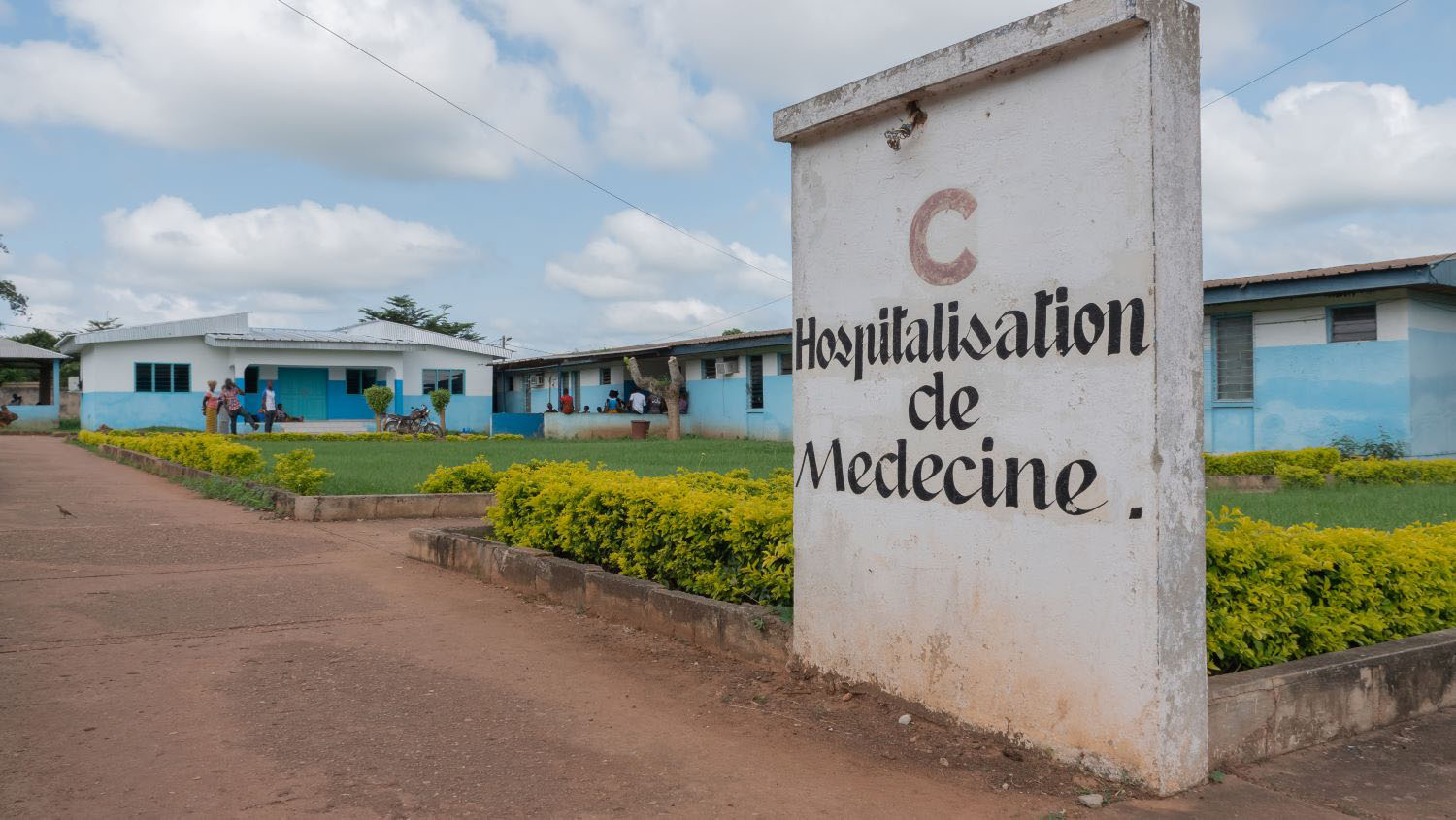Recommended

Blog Post
Sovereign debt issues for emerging markets and developing economies (EMDEs) were a predictable subject of many conversations at the World Bank and IMF Annual Meetings in Marrakech. Here are our main takeaways on the state of play and how to make progress to address urgent needs amidst slow-moving processes:
1. Debt service pressures are getting worse.
Higher-for-longer interest rates are particularly important for the latter group. The marking down of growth prospects is a problem for all. Financing for development is being squeezed out, and there is little chance of near-term reversal. An UNCTAD report found that 3.3 billion people—nearly half of humanity—currently live in countries that spend more money paying interest on their debts than on education or health. Growth forecasts in EMDEs are expected to decline in both 2023 and 2024. Medium term growth is expected to be especially weak for EMDEs, which will mean reduced fiscal space, increased debt vulnerability, and greater susceptibility to shocks. As interest rates climb and stay higher for longer, borrowing becomes a pricier endeavor, prompting a critical examination of the role of concessional financing in mitigating the challenges ahead. And more attention must be paid to ensure that all funds are used productively.
2. Notwithstanding this worsening, we won’t see many more cases of debt defaults. It’s too expensive for countries to default on their debt.
Under the current international architecture for resolving sovereign debt, borrowing countries are forced to enter a long and unpredictable restructuring process, and lose financing access in the interim. Three years after the Common Framework (CF) was set up, only four countries have come forward: Zambia, Chad, Ethiopia, and Ghana. This is far fewer than expected, and only Chad’s debts have been resolved with little debt relief. A month ago, it looked like Zambia was making good progress but even that is unraveling now with official creditors questioning the deal done with private creditors. Fearing loss of market access, finance ministers have opted not to default. This has had grave consequences, as they are forced to underspend on education and health. As recent CGD analysis found, high interest payments in countries at high risk of, or currently in debt distress is crowding out important expenditure on health.
3. The current architecture for resolving debt is unlikely to be radically reformed within the next year.
The process for restructuring debt will remain slow and costly, with unpredictable outcomes. There have been some efforts to make marginal improvements to the CF (and it remains crucial to continue making instrumental improvements), but there is no appetite for wholesale change or grand design alternatives. These marginal improvements include specific proposals set out by the IMF’s management: First, greater clarity on the different steps and timelines in the CF. Second, comprehensive and sustained debt service payment standstill for the duration of the negotiation. Third, clarification on how comparability of treatment will be effectively enforced. And fourth, expanding the CF to other MICs that are highly-indebted. Other ideas are on the table to improve the CF, include a proposal for an “integrated framework” that would combine restructuring of private and official bilateral claims in a simultaneous process (thus avoiding the Zambia-style situation).
However, there isn’t much appetite for wholesale change. Some stakeholders have called for a second iteration of a coordinated Heavily Indebted Poor Countries (HIPC) style initiative, but this is highly unlikely under the current geopolitical environment. The coordination and participation required for a comprehensive debt relief program like HIPC 2.0 has become increasingly complex, and less likely, as the range of creditors becomes more diverse, with the inclusion of non-traditional lenders and private sector participants.
4. Liquidity and solvency issues are emerging in countries not covered by the Common Framework.
Sri Lanka is only the first country not covered by the CF because its income is too high to face issues. These countries bring their own complexities in dealing with China as a creditor outside the CF, and they also have high levels of private debt.
5. The Global Sovereign Debt Roundtable (GSDR) is not and cannot become a decision-making body.
The GSDR is a good innovation, but its core purpose is to engage with China and address its concerns. Its mission is to facilitate dialogue and cooperation among key stakeholders engaged in debt restructurings, and its effectiveness lies in its commitment to its primary objective. But it’s not a decision-making body and is not designed to resolve issues, so we shouldn’t assume it can. However, given that its main objective is to engage with the Chinese authorities on debt issues, it would be worth asking them what changes to the GSDR would make it a more effective forum. Does it really make sense to have the rotating G20 presidency serve as a third co-chair?
6. Given that most countries under debt servicing pressure will avoid debt restructuring as long as they can, there needs to be more focus on mitigating the damaging developmental consequences of illiquidity in the interim.
Given that most countries under debt servicing pressure will avoid debt restructuring as long as they can, how can the world help to mitigate the damaging developmental consequences of illiquidity in the interim? Many of the countries at risk of debt distress are currently facing pressing liquidity problems in making principal and interest payments, given the high interest rates. At the same time, access to credit for the countries with market access is limited. There are no clear solutions here. It’s easy to call for increased domestic resource mobilization, but this takes time to achieve even if the political will is there. Ditto, structural reforms to improve economic efficiency and attract private capital.
7. IFI finance now could help but a new DSSI may be the least bad option for liquidity support.
External financing from official creditors could provide short-term liquidity but comes at the expense of further adding to the debt stock of these countries. This debt would be senior, and as such, harder to resolve if debt restructuring was needed down the road. The Debt Service Suspension Initiative (DSSI) offered temporary suspension of official sector debt payments to 73 countries during the COVID pandemic, and the 48 countries that accepted the relief deferred $12.9 billion of debt service payments from May 2020 to December 2021 for these borrowers. A similar standstill on debt payments from official and private creditors could provide substantial liquidity to countries and allow them to continue making needed expenditures, including supporting social protection for the most vulnerable. But is the political will there to reach consensus on this and how can the private creditors be incentivized to join this time round?
8. The IMF needs to accelerate work on reforming the debt market architecture and recognize the need for substantive change.
The IMF, which is the institution entrusted with assessing debt sustainability, operates with two distinct frameworks—one tailored for LICs and another for countries with market access. But the differences between these two frameworks lead to cliff edges and depending on where countries fall, they can end up with a very different outcome (as we have seen recently with the differences between Sri Lanka and Zambia deals). While the IMF recognizes the imperative for adjustments (and there are multiple proposals to improve the frameworks), the lack of substantive changes thus far poses a risk of being too slow, too late. The ongoing program to refine the LIC framework needs to be expedited to ensure a more responsive and equitable approach to debt sustainability assessment. It is not clear that major shareholders have prioritized this issue—particularly given the huge development cost the inadequacies of the current system are creating.
9. The bottom line
The bottom line is that we might see some marginal improvements in the sovereign debt restructuring architecture in the coming year, but we shouldn’t expect radical changes. At the same time, more and more countries will face increased fiscal pressure from debt servicing and stagnating economic prospects.
Thus, the practical approach to dealing with the issue is on two tracks: One, find ways to alleviate the immediate liquidity problems for these countries, including through second best means such as a second DSSI; and two, accelerate work on the useful (if not radical) improvements that can be made to the Common Framework and other debt restructuring mechanisms.
The authors would like to thank Ceyla Pazarbasioglu, Indermit Gill, Ishac Diwan, Reza Baqir, Sean Hagan, and Theo Maret for helpful comments on this piece.
Disclaimer
CGD blog posts reflect the views of the authors, drawing on prior research and experience in their areas of expertise. CGD is a nonpartisan, independent organization and does not take institutional positions.
Image credit for social media/web: SNEHIT PHOTO / Adobe Stock






